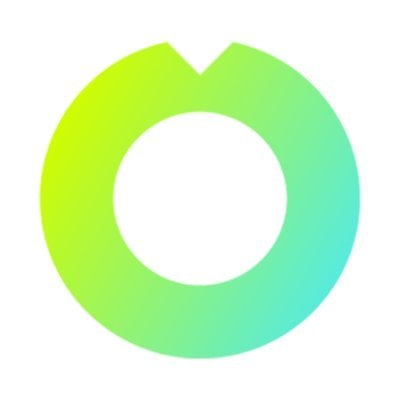| Job Position | Company | Posted | Location | Salary | Tags |
|---|---|---|---|---|---|
Andalusia Labs | San Francisco, CA, United States | $122k - $150k | |||
Divine | San Francisco, CA, United States | $87k - $115k | |||
Manta Network, Powered by p0x labs | New York, NY, United States | $84k - $90k | |||
Wormholefoundation | Remote | $98k - $115k | |||
| Learn job-ready web3 skills on your schedule with 1-on-1 support & get a job, or your money back. | | by Metana Bootcamp Info | |||
Uniswaplabs | Remote | $209k - $232k | |||
Pulley | Remote | $130k - $220k | |||
Launchpadtechnologiesinc | Remote | $84k - $150k | |||
LI.FI | APAC APAC | $60k - $100k | |||
Exodus54 | Remote | $150k - $9999k | |||
Kraken | United States | $127k - $203k | |||
Kraken | United States | $127k - $203k | |||
Kraken | London, United Kingdom | $88k - $101k | |||
Kraken | London, United Kingdom | $88k - $101k | |||
Keyrock | Brussels, Belgium | $133k - $144k | |||
Alpaca | Remote | $87k - $109k |
Overview
At Andalusia Labs, we build foundational economic infrastructure for programmable global markets, connecting capital, computation, and coordination across the internet. Our work sits at the intersection of distributed systems, finance, and machine intelligence, with the goal of growing the world’s programmable GDP.
Our team has shipped massively scalable systems and products at Coinbase, Google, AWS, Microsoft, X, TikTok, Goldman Sachs, and High-Frequency Trading firms. We are backed by Coinbase, Mubadala, Lightspeed, Bain Capital, Pantera, Framework, Digital Currency Group, Proof Group, Nima Capital, Naval Ravikant, Arthur Hayes, and founders, GPs, and executives from organizations like Founders Fund, Google, and Coinbase.
Role
We are hiring a Software Engineer Intern to help build systems that power programmable markets. You will contribute to core services, ship high-performance code, and learn across the stack. You will work alongside founders, senior engineers, and product partners to turn new primitives into production systems that handle high usage.
Responsibilities
- Contribute to core services across networking, consensus and execution, tokenization, exchange, settlement, and data pipelines
- Design, implement, and operate high-quality services in C++, Rust, Go, or Solidity with guidance from senior engineers
- Profile and improve performance for throughput, tail latency, memory, storage, and network efficiency
- Build correctness and safety with unit tests, property-based testing, fuzzing, static analysis, and thorough reviews
- Support production reliability with clear SLOs, alerting, dashboards, and participation in incident response after onboarding
- Create and maintain internal libraries, developer tooling, and CI to speed delivery and raise code quality
- Write clear design docs that explain tradeoffs and support sound technical decisions
- Collaborate with peers in design and code reviews and contribute to a high engineering bar
- Partner with product, research, security, and go-to-market to scope milestones and ship new capabilities
- Learn, model, and help implement financial primitives and risk logic with rigorous testing and telemetry
Requirements
- Pursuing a BA/BS in Computer Science, Computer Engineering, Electrical Engineering, Mathematics, Physics, or a related technical field
- 0 to 2 years of experience through internships, research, or significant projects working with at least one of these languages (C++, Rust, Go, Solidity)
- Strong understanding of distributed systems, data structures, algorithms, and software design
- Experience building performant applications in internships, research, or significant projects
- Exposure to compilers, runtimes, optimization, or static analysis through internships, research, or significant projects is a plus
- Familiarity with Git, continuous integration, and automated testing for C++, Rust, Go, and or Solidity stacks
- High ownership, ability to learn quickly with minimal guidance
- Ability to work in a fast-paced environment and across the product engineering stack
- Clear written and verbal communication
Bonus
- Pursuing a MA/MS, PhD, or advanced degree in Computer Science, Computer Engineering, Electrical Engineering, Mathematics, Physics, or a related technical field
- Familiarity with cryptography, key management, TEEs, or zero-knowledge systems
- Experience or coursework in fintech, algorithmic trading, or financial primitives
- Experience with React, Node, and/or TypeScript
- Interested in startups
What does a React developer in web3 do?
A React developer in the context of web3 is a developer who is using the React JavaScript library to build user interfaces for decentralized applications (dApps) that run on the Ethereum blockchain
These dApps often use smart contracts to facilitate transactions and other interactions on the Ethereum network
Overall, the role of a React developer in web3 involves using your skills in React development to help build cutting-edge decentralized applications that leverage the power of the Ethereum blockchain
As a React developer in web3, some of your responsibilities might include:
- Integrating the dApp with the Ethereum blockchain. This might involve using tools like web3.js and Ethers.js to connect to the Ethereum network and interact with smart contracts.
- Building the user interface for a dApp using React. This could involve creating components for the various elements of the dApp, such as buttons, forms, and other input elements.
- Implementing features that are specific to decentralized applications, such as handling cryptocurrency transactions and displaying data from the blockchain in a user-friendly way.
- Collaborating with other members of the development team, such as blockchain engineers and designers, to ensure that the dApp functions properly and meets the needs of the end users.

